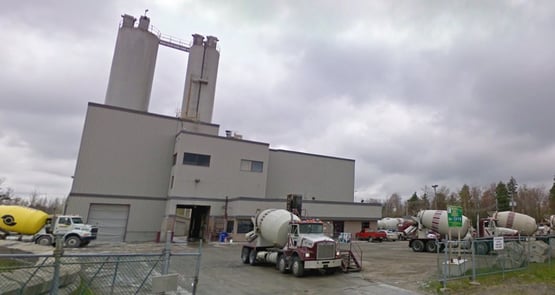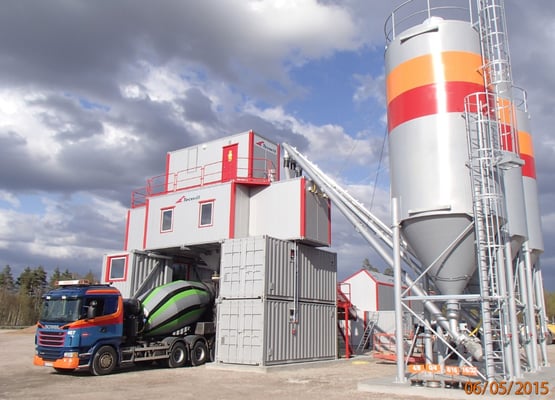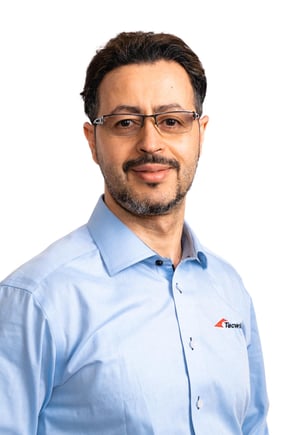Relocating concrete batching plants is common in the industry. How easy – and cost-efficient – it is to relocate a plant depends on the type of the plant. Some of them should stay in place, while others are ideal for relocation projects.
Reasons why ready–mix concrete manufacturers relocate their concrete mixing and batching plants include:
- The need for new markets due to economic changes
- The need to be closer to customers or suppliers
- Increasing demand for concrete products
- Participation in bigger projects
The effort and resources needed to relocate a plant depend on the plant’s construction. Below, we’ll discuss some of the most common types of concrete batching plants and how friendly they are to move to a new site.
1. Stationary plants: difficult and expensive to relocate
Stationary, or permanent, concrete batching plants are not designed for relocation. Typically, they are constructed to fit onto the specific building ground and are not mobile.
Generally, these plants consist of single elements put together piece by piece at the site.
Disadvantages of stationary plants
- Expensive construction
- A lot of engineering and fitting work at the construction site, especially if equipped with cold/heat insulation
- Testing required to ensure that all components and systems are working well
- Difficult and expensive relocation
If avoiding stationary concrete batching plant relocation is not possible, each dismantling and reinstallation step needs proper planning and accurate documentation. These include:
- Layout drawings of the facilities and equipment
- Operation and maintenance manuals, maintenance records, spare part inventories, PLC program data
- Instructions for disconnection, dismantling, loading, protecting, transporting, unloading, reconnection and startup
- Equipment condition review to evaluate suitability for relocation or need for renewal. Note that it can be often more costly to repair an outdated part rather than replace it
- Evaluation of whether special foundations, pits or trenches are required at the new site
- Emptying of bins, silos, hoppers, screws and scales

2. Mobile plants on wheels: moderately difficult and expensive to relocate
Mobile concrete batching plants on wheels consist generally of frameworks carrying dosing and conveying equipment, scales and a mixer.
Larger plants generally consist of two units – a mixing unit and an aggregate bin unit. Meanwhile, smaller plants are also equipped with low-volume aggregate bins.
This type of concrete mixing plant has axles, making it transportable by truck or tractor unit.
The mobility of such plants is their main advantage. However, if other parts of the plant have to be moved too, additional trucks or tractors are required for transportation. This refers to aggregate units, additional storage units, binding agent silos and even the control unit. And if the plant will be operated in cold or hot weather, quite a lot of extra dismantling/reinstallation work is required for the insulation.
Disadvantages of mobile plants on wheels
- Limited aggregate storage capacity
- Low production capacity
- High operating costs due to frequent bins and silos filling
- Limited space and no convenient ladders for service and maintenance
- High and expensive loading ramp required due to the high loading edges of the aggregate bins
- Using axles can be problematic due to water and dirt if they haven’t been used for a long time
- Thermal insulation must be dismantled and reassembled separately
- Relocation of concrete plants can get expensive if additional units need to be moved, too

3. Containerized plants: cheap and easy to relocate
Containerized concrete batching plants are becoming ever more popular.
Containerized plants are built in modules. They come fully equipped with aggregate bins, mixers, binding agents and aggregate and admixture conveying, dosing and weighing devices. Compact and sleek, such plants include everything required for easy and optimal operation, maintenance and repair.
Most equipment is preinstalled and tested at the factory. This includes winter insulation, as well.
Relocation and re-erection of containerized plants is very easy and economical – even if insulated against heat or cold.
Advantages of containerized concrete batching plants
- Factory-preinstalled thermal insulation that doesn’t need to be dismantled during relocation
- Foundations and loading ramp elements are designed to be mobile
- Easy loading, transportation and unloading due to units having sea container dimensions
- Easy and fast connection of all units due to plug-in connectors

Summary
A containerized plant is the best solution for any concrete batching plant that will have to be relocated. Featuring modular construction, preinstalled equipment and convenient transportation, containerized plants provide a practical solution for concrete manufacturers. They offer efficient relocation without compromising functionality or operation.
They are also more affordable, require less space and are very convenient to service. What else could you ask for?
Read more about our services from the brochure below.

